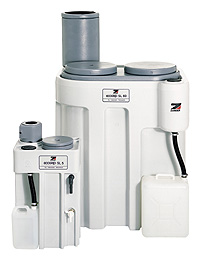 You may already know that food and beverage processing creates complex liquids that require specialized steps for filtration. Typically, the first step is removing larger particles and sediment. Whether the beverage is raw juice, fermented wine, beer or even spring water, it carries sediment and particulates that must be removed in order to create products that are both flavorful and safe for consumption.
You may already know that food and beverage processing creates complex liquids that require specialized steps for filtration. Typically, the first step is removing larger particles and sediment. Whether the beverage is raw juice, fermented wine, beer or even spring water, it carries sediment and particulates that must be removed in order to create products that are both flavorful and safe for consumption.
Nearly all clarification filtration applications are performed using depth filtration media. Cartridge filters, for example, use two forms of depth media. The standard depth filter is a self-supporting tube made with a polymer (usually polypropylene), and the tube is formed using the melt-blown or nano-spun process. The other form of cartridge depth filter uses pleated flat sheet media. These are typically made with polypropylene or fiberglass.
It’s not uncommon for custom filtration systems to be designed for new applications and to solve challenges in a manufacturer’s existing process(es). As one of the leading Donaldson filter distributors in VA, we will work with you to design, build and install a system that is cost-effective and meets your needs for excellent beverage filtration. Contact us or visit our page on industrial process filters or Donaldson’s new Lifetec® process filters for more information.







 The terms “oil interceptor” and “oil water separator” are often used interchangeably. However, these units are very different.
The terms “oil interceptor” and “oil water separator” are often used interchangeably. However, these units are very different.


